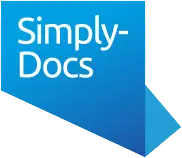Updated Website Terms & Conditions for August 2020
Website terms and conditions, also commonly referred to as “terms of use”, are a key ingredient for any website. Website terms and conditions set out the various obligations, rights, and rules that govern the use of your website. Users are told what they can and cannot do with the content that you provide and rules governing sharing and linking will be set out. Website terms and conditions should also govern user conduct where appropriate, for example, by laying down rules on the lawful use of the site and terms relating to viruses, malware, hacking, and the like.
In addition to setting out the dos and don’ts, your website terms and conditions should also be used to protect yourself. Liability should be limited where it is legal and fair to do so, and disclaimers should be deployed to ensure that you are not held responsible for content that is not yours or for over-reliance on content that is.
Last but not least (and, indeed first in our templates) website terms and conditions must include a range of important information about you and your business.
Simply-Docs Website Terms and Conditions Review
Here at Simply-Docs, we have offered a wide range of website terms and conditions templates for many years. As with all of our documents, these are reviewed periodically to ensure that they are kept up to date with developments in law and best practice. Over the coming months, we will be reviewing and updating all of our website terms and conditions templates and adding some new supplementary templates to further enhance our range.
Updated Website Terms and Conditions for Small Sites and Free Digital Content
Our review begins now with the publication of updates to our templates designed for websites providing basic information, brochure content, and free digital content. Each template has been reviewed in-depth and rebuilt from scratch. All have been updated in line with current best practice. Key parts of each set of terms and conditions have been re-worded to make them simpler, clearer, and more user-friendly. In some cases, sections of documents have been re-organised to make them more logical and easier both for you to work with, and for your users and customers to follow. Not only does user-friendliness improve the overall user experience of a website but, from a legal point of view, it increases the likelihood that standard terms will be viewed as fair.
Provisions relating to the use of content have been re-visited. Common practice tends to favour strict provisions that limit users’ subsequent use of your intellectual property, even for personal use. In reality, a large amount of online content will be used freely by users whatever the terms and conditions say. We have therefore chosen to provide two versions of each intellectual property section. One takes a more standard and restrictive approach whereas the second includes more optional elements and flexibility. In either case, technical measures (preventing the saving of images via right-clicking, for example) may be a more effective means of preventing excessive copying of your content.
For those terms and conditions that refer to some form of interactivity, we have added a new option: the ability to streamline your terms and conditions and refer to a separate acceptable usage policy.
New Acceptable Usage Policy
A Website Acceptable Usage Policy sets out rules and standards for users of your website to follow when using the site. It requires users to use your site in a lawful manner and sets out a series of content standards that must be complied with. The content standards prohibit the kind of material that you do not want users sending to you in communications, or uploading to your site via any kind of interactive facilities. This typically includes material that is unlawful, defamatory, discriminatory, offensive, or that breaches other important duties such as duties of confidence.
Our all-new Acceptable Usage Policy template is designed for use alongside the main terms and conditions for a website, in much the same way as you would use a separate privacy policy and/or cookie policy. It is incorporated into your terms and conditions with suitable cross-references and it is made clear to users that a breach of the policy constitutes a breach of your terms and conditions as a whole. A range of actions that you may take in response to such a breach are also set out, including suspending or terminating a users’ right to use your website.
This new template resides in a new sub-folder within our Website Terms and Conditions group which we have called Supporting Website Documents. At present, the Acceptable Usage Policy is the sole resident of this new sub-folder; however, we will be adding more templates as our review progresses. This begins next month with a new standard cancellation form for use with e-commerce websites, which will be published alongside our updated e-commerce terms and conditions.
The contents of this Newsletter are for reference purposes only and do not constitute legal advice. Independent legal advice should be sought in relation to any specific legal matter.


